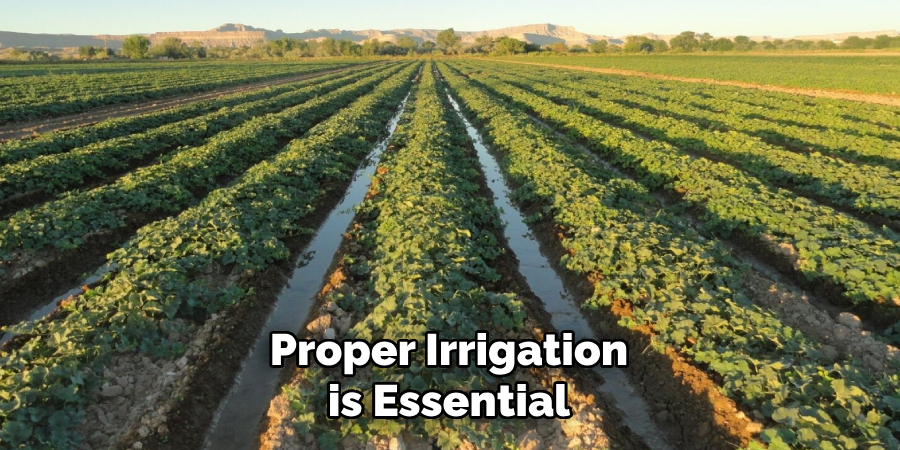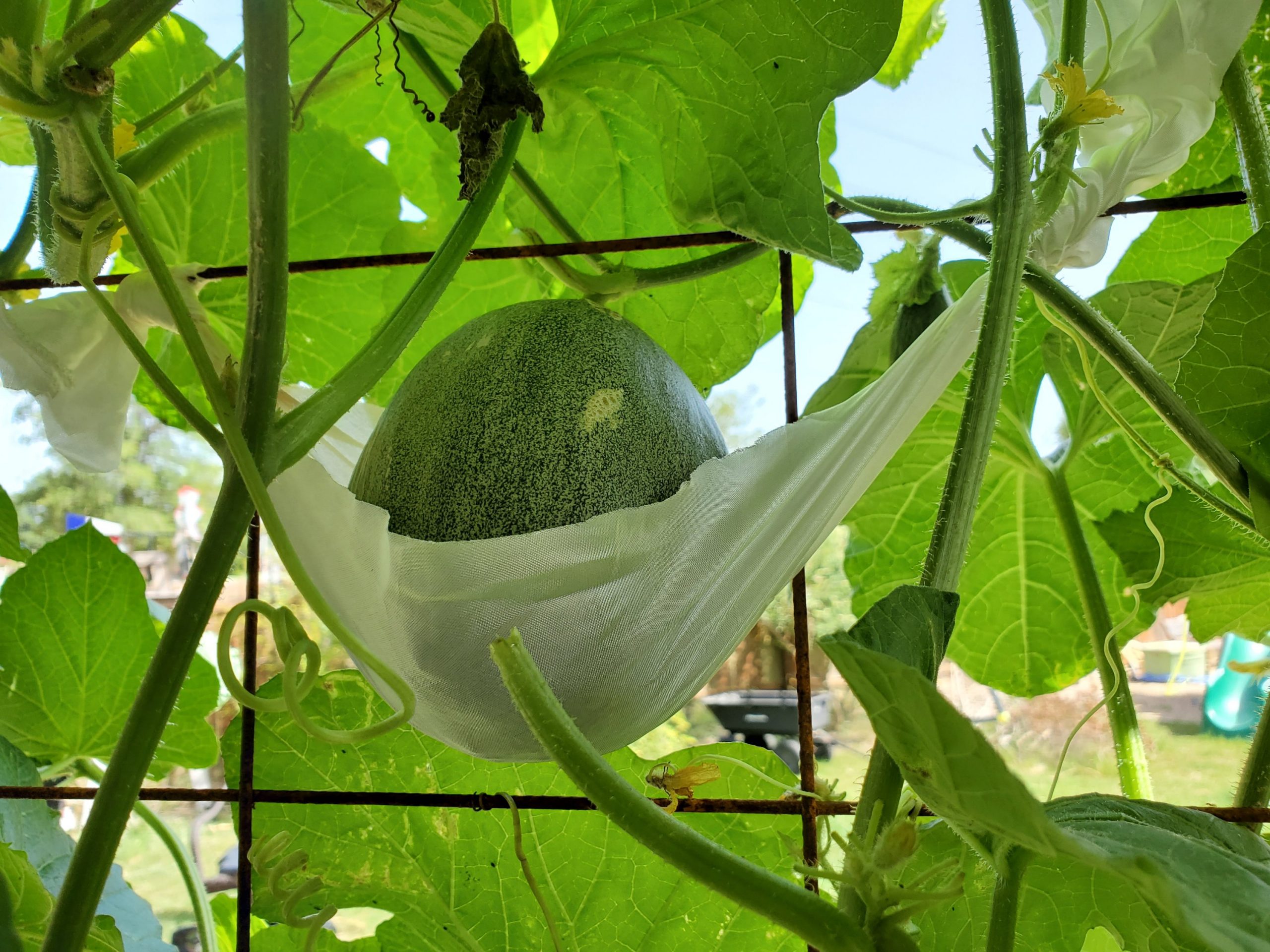To support melons on a trellis, ensure that the trellis is sturdy and provides enough support for the weight of the fruit. Place the melons gently on the trellis and secure them using soft ties or netting to prevent damage.

Credit: www.youtube.com
How to Support Melons on a Trellisc: Step by Step Guide
Choosing The Right Trellis For Melons
Growing melons on a trellis requires choosing the right type of trellis. Considering the specific melons being grown and the space available is important in determining the suitable trellis. Different types of melons may have varying support requirements. Exploring various trellis options will help in finding the best fit for supporting melons.
By evaluating the melon variety, available space, and support needs, the right trellis can be selected. Trellises provide structure, maximize space, and prevent fruit from touching the ground, reducing the risk of diseases. Whether it’s a vertical or horizontal trellis, ensuring it is sturdy and able to withstand the weight of growing melons is crucial.
Providing proper support for melons on a trellis promotes healthy growth and improves overall yield.
Preparing The Trellis For Melons
When selecting a location for your melon trellis, consider a spot that receives plenty of sunlight. Prepare the ground by removing any weeds or debris and loosen the soil to ensure good drainage. The trellis structure should be installed securely, using stakes or posts that are firmly rooted in the ground.
Attach the trellis netting or wires to support the melon vines as they grow. Make sure to space the melon plants properly, allowing enough room for them to climb and spread on the trellis. Regularly monitor the growth of the melons and adjust the support as necessary to prevent sagging or damage to the vines.
Supporting your melons on a trellis can help maximize space and improve air circulation, leading to healthier plants and bigger, more accessible fruit.
Best Practices For Training Melons On A Trellis
Melons are best supported on a trellis using soft ties or netting. It is important to understand the growth habits and vine types of melons. Identifying the main vine and secondary shoots is crucial for proper training. By securing the melons, you can avoid damage caused by their weight and help them grow vertically.
This not only saves space but also improves air circulation, reducing the risk of diseases. Regularly check and adjust the ties or netting as the melons grow. Remember to be gentle to avoid damaging the vines. Supporting melons on a trellis not only aids in their growth but also makes it easier to care for and harvest them.
So, follow these best practices to ensure successful melon cultivation on a trellis.
Pruning And Training Techniques For Melons
Pruning and training techniques are essential for supporting melons on a trellis. To focus energy on main growth, prune the side shoots. Direct the vine towards the trellis structure and secure it using gentle ties. These methods ensure that the melon vine grows vertically, maximizing sunlight exposure and minimizing ground contact.
By removing unnecessary side shoots, the plant can concentrate its resources on developing stronger and more productive main stems. Gentle ties provide necessary support without causing damage or hindering growth. Following these techniques will help you effectively support melons on a trellis, leading to healthier plants and better fruit production.
Supporting Heavy Melons On A Trellis
Supporting heavy melons on a trellis requires recognizing signs of their growth. To prevent damage or breakage, utilize slings or hammocks as support for larger melons. If the trellis structure appears weak or unstable, reinforce it to ensure stability and prevent collapse.
By taking these steps, you can effectively support melons on a trellis, maximizing their growth potential and avoiding any potential harm. Remember to regularly monitor the melons’ growth and adjust the support system accordingly to ensure their healthy development. With proper care and attention, you can successfully support melons on a trellis and enjoy a bountiful harvest.
Watering And Nutrient Management For Trellised Melons
Proper irrigation is essential for supporting melons on a trellis. To ensure success, consider the specific needs of the melon variety you are growing. This involves monitoring and adjusting nutrient levels accordingly. By providing the right amount of water and nutrients, you can promote healthy growth and maximize fruit production.

Remember to regularly check the moisture levels in the soil and adjust irrigation as needed. Additionally, keep an eye on the melon plants for any signs of stress or nutrient deficiencies. In conclusion, proper watering and nutrient management are crucial for achieving optimal results when growing trellised melons.
Troubleshooting Common Challenges With Trellised Melons
Growing melons on a trellis can present common challenges. Vine health and fruit development issues are often encountered. To address these problems, it is important to implement appropriate solutions. Regularly monitor the health of the vines and provide adequate support as they grow upward.
Pay attention to any signs of stress, such as wilting or yellowing leaves, and take immediate action. Regularly prune the vines to ensure proper air circulation and prevent diseases. Additionally, create a supportive framework for the fruits to develop properly.
Use slings or nets to cradle the melons and prevent them from falling off the trellis. By addressing these challenges and providing the necessary support, you can successfully grow melons on a trellis and enjoy a bountiful harvest.
Frequently Asked Questions Of How To Support Melons On A Trellis
How Do You Support Melons On A Trellis?
Supporting melons on a trellis is important to prevent breakage. Start by using sturdy trellis netting or a support system. Attach the melons to the trellis using soft, flexible ties. Regularly check and adjust the ties as the melons grow to ensure proper support.
Why Should You Support Melons On A Trellis?
Supporting melons on a trellis has several benefits. It helps to keep the fruit off the ground, reducing the risk of rot and pests. It also maximizes air circulation around the plants, which can help prevent diseases. Supporting melons on a trellis also makes harvesting easier and more efficient.
What Are The Different Types Of Trellises For Melons?
There are several types of trellises that work well for supporting melons. You can use a simple a-frame trellis, a slanted trellis, or a vertical trellis. Choose a trellis that is sturdy enough to support the weight of the melons and allows plenty of space for the vines to grow.
Can You Grow Melons Without A Trellis?
While it is possible to grow melons without a trellis, it is generally not recommended. Without a trellis, the melons can become easily damaged, and the risk of diseases and pests is higher. Using a trellis not only supports the melons but also improves airflow and makes maintenance easier.
When Should You Start Supporting Melons On A Trellis?
Start supporting melons on a trellis as soon as the vines begin to grow. Be sure to provide support early on to prevent the vines from becoming tangled or broken. Regularly check the melons and adjust the ties to ensure proper support as the fruit develops.
Conclusion
Properly supporting melons on a trellis is crucial for their growth and overall health. By following the tips outlined in this blog post, you can ensure that your melon plants thrive and produce an abundant harvest. Remember to choose the right trellis material, provide sturdy support, and regularly monitor and adjust the ties as the melons grow.
Adequate watering and pruning are also essential for promoting strong vines and preventing disease. Additionally, creating a favorable environment by providing ample sunlight and good air circulation is key to successful melon cultivation. With these techniques, you can enjoy the satisfaction of growing your own fresh and delicious melons, while also optimizing your garden space.
Happy gardening!

